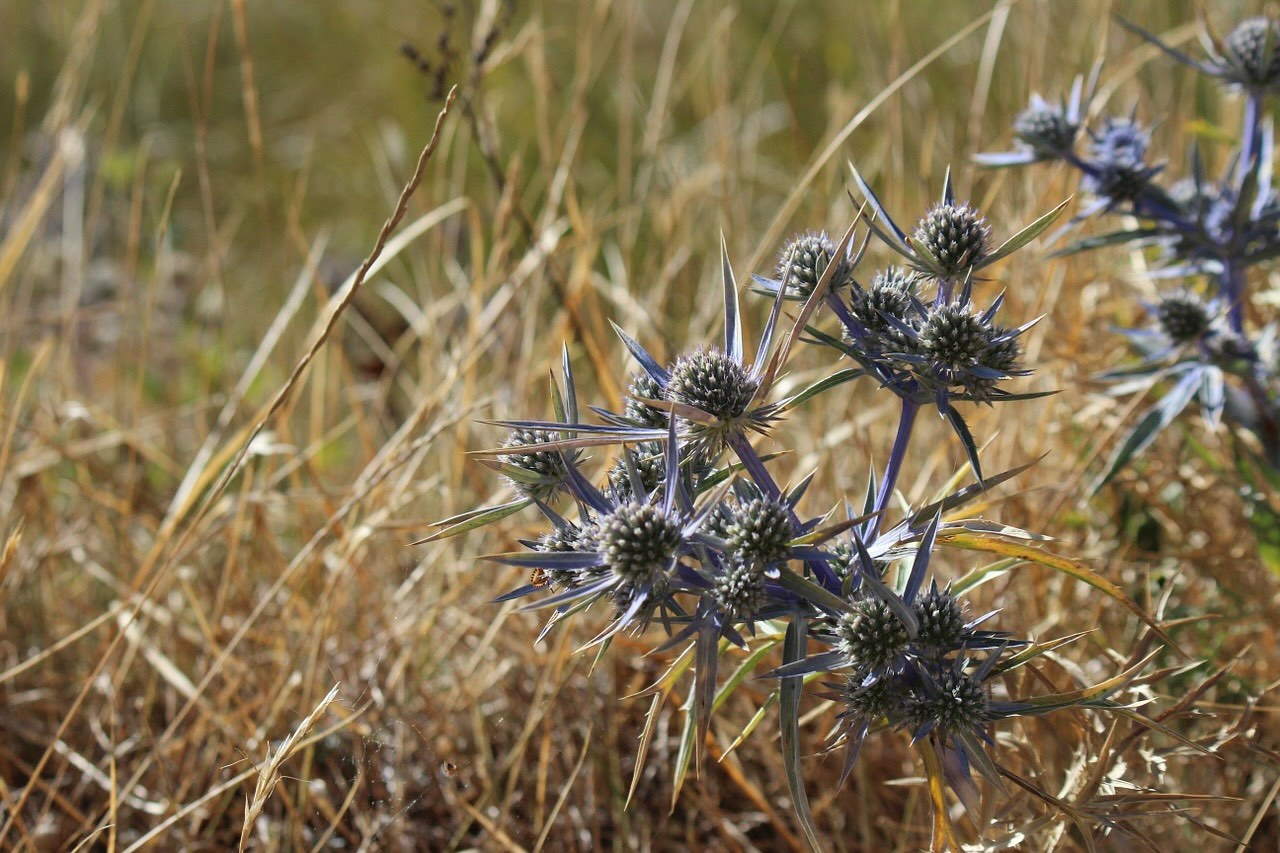Home>Gardening & Outdoor>Landscaping Ideas>How To Get Rid Of Grass Mites


Landscaping Ideas
How To Get Rid Of Grass Mites
Modified: August 17, 2024
Discover effective landscaping ideas to eliminate grass mites and restore your lawn's health. Learn how to get rid of grass mites with expert tips and techniques.
(Many of the links in this article redirect to a specific reviewed product. Your purchase of these products through affiliate links helps to generate commission for Storables.com, at no extra cost. Learn more)
Introduction
Grass mites, also known as spider mites, are tiny arachnids that can wreak havoc on your lawn and garden. These minuscule pests may be small, but their impact can be significant, causing damage to the grass and plants in your outdoor space. Understanding how to identify grass mites, prevent infestations, and effectively control them is crucial for maintaining a healthy and vibrant landscape.
In this comprehensive guide, we will delve into the world of grass mites, offering valuable insights into their identification, prevention, and control. Whether you're dealing with a current infestation or aiming to safeguard your lawn from potential mite invasions, this article will equip you with the knowledge and strategies needed to combat these troublesome pests.
By learning about the various natural and chemical treatments available, you can make informed decisions about the best approach for your specific situation. From DIY remedies to professional interventions, we will explore a range of options to help you reclaim and preserve the beauty of your outdoor environment.
Join us as we embark on a journey to uncover the mysteries of grass mites and discover effective solutions for keeping your lawn lush, green, and free from these pesky intruders.
Key Takeaways:
- Grass mites can damage your lawn by feeding on plant sap, causing yellowing and webbing on grass blades. Identifying and preventing infestations is crucial for maintaining a healthy outdoor space.
- Natural and chemical treatments offer effective solutions for controlling grass mites. From neem oil to acaricides, there are various options to combat infestations while prioritizing the health of your lawn and garden.
Read more: How To Get Rid Of Grass Mites On Humans
Identifying Grass Mites
Before implementing control measures, it’s essential to accurately identify the presence of grass mites in your lawn or garden. These tiny pests, measuring less than 1 millimeter in size, often go unnoticed until their damage becomes apparent. Understanding the signs of a grass mite infestation is the first step in effectively addressing the problem.
One of the primary indicators of grass mite activity is the appearance of stippling or yellowing on grass blades. As these pests feed on plant sap, they leave behind distinctive marks, causing the foliage to lose its vibrant green color. Upon closer inspection, you may notice fine webbing on the grass, a telltale sign of mite infestation.
Another way to identify grass mites is by conducting a simple test known as the white paper test. To perform this test, shake a grass blade over a piece of white paper. If tiny specks resembling dust or pepper flakes fall onto the paper and start moving, it’s likely that you have a grass mite infestation.
Furthermore, closely examining the undersides of grass blades and plant leaves can reveal the presence of these pests. Grass mites are often found congregating in these areas, where they feed and reproduce, perpetuating the infestation.
Understanding the appearance and behavior of grass mites is crucial for accurate identification. By recognizing the signs of their presence, you can take proactive measures to address the infestation and prevent further damage to your lawn and plants.
Preventing Grass Mite Infestations
Prevention is a key aspect of maintaining a healthy and thriving lawn. By implementing proactive measures to deter grass mite infestations, you can minimize the risk of damage and preserve the beauty of your outdoor space. Here are some effective strategies for preventing grass mite infestations:
- Maintain Optimal Lawn Health: A well-nourished and properly maintained lawn is less susceptible to grass mite infestations. Regular watering, proper mowing, and appropriate fertilization contribute to the overall health and resilience of the grass, making it more resistant to pests.
- Encourage Natural Predators: Introducing and preserving natural predators of grass mites, such as ladybugs and predatory mites, can help control mite populations. Creating a diverse and balanced ecosystem in your garden promotes natural pest management.
- Monitor Moisture Levels: Grass mites thrive in hot, dry conditions. By monitoring moisture levels and ensuring that your lawn is adequately hydrated, you can create an environment that is less hospitable to these pests.
- Prune and Remove Infested Plants: If you notice signs of grass mite infestation on specific plants, promptly prune and remove affected foliage to prevent the spread of mites to other areas of your garden.
- Maintain Garden Cleanliness: Regularly clearing debris and maintaining a tidy garden environment can help reduce the likelihood of grass mite infestations. Removing excess thatch and keeping the garden free from clutter minimizes potential hiding places for pests.
By incorporating these preventive measures into your lawn and garden care routine, you can create an environment that is less conducive to grass mite infestations. Proactively safeguarding your outdoor space from these pests contributes to the long-term health and vitality of your landscape.
To get rid of grass mites, try using neem oil or insecticidal soap to spray on the affected areas. This can help to control and reduce the mite population in your lawn.
Natural Remedies for Grass Mite Control
When addressing grass mite infestations, natural remedies offer effective and environmentally friendly solutions for controlling these pests. By harnessing the power of natural elements and beneficial organisms, you can combat grass mites while minimizing the impact on the surrounding ecosystem. Here are some natural remedies for grass mite control:
- Neem Oil: Derived from the neem tree, neem oil is a natural insecticide and repellent that can be effective in controlling grass mites. When applied to the affected areas, neem oil disrupts the mites’ feeding and reproductive cycles, helping to reduce their population.
- Beneficial Nematodes: Introducing beneficial nematodes to the soil can aid in controlling grass mite infestations. These microscopic organisms actively seek out and feed on mites, contributing to the natural balance of the garden ecosystem.
- Garlic and Onion Spray: A homemade spray consisting of garlic and onion blended with water can serve as a natural deterrent for grass mites. When sprayed on affected plants, the pungent aroma repels mites and inhibits their activity.
- Soap and Water Solution: A simple yet effective remedy involves spraying plants with a solution of mild liquid soap and water. This method disrupts the mites’ protective waxy coating, leading to dehydration and eventual control of the infestation.
- Diatomaceous Earth: Utilizing food-grade diatomaceous earth as a natural insecticide can help combat grass mites. This powdery substance, derived from fossilized algae, effectively dehydrates and eliminates mites upon contact.
By incorporating these natural remedies into your grass mite control efforts, you can address infestations while promoting a sustainable and eco-friendly approach to pest management. These natural solutions offer effective alternatives to chemical treatments, allowing you to maintain a healthy and harmonious garden environment.
Chemical Treatments for Grass Mite Control
When natural remedies alone are insufficient in addressing severe grass mite infestations, chemical treatments can provide effective solutions for controlling these persistent pests. It’s important to approach chemical treatments with caution and follow recommended guidelines to minimize potential environmental impact. Here are some common chemical treatments for grass mite control:
- Acaricides: Specifically formulated to target mites, acaricides are chemical compounds designed to control mite infestations. These products are available in various formulations, including sprays and dusts, and are applied directly to affected areas to eliminate mites.
- Insecticidal Soaps and Oils: Insecticidal soaps and horticultural oils can be effective in controlling grass mites while posing minimal risk to beneficial insects and the environment. These products work by suffocating and disrupting the mites’ cellular structure, ultimately leading to their demise.
- Miticide Sprays: Miticides are specifically formulated to target mites at different stages of their life cycle. These specialized sprays provide targeted control of grass mites, helping to reduce their population and prevent further damage to plants.
- Synthetic Pyrethroids: Synthetic pyrethroids are chemical compounds derived from natural pyrethrins, offering potent insecticidal properties. When used according to label instructions, synthetic pyrethroids can effectively control grass mites while minimizing harm to non-target organisms.
- Systemic Insecticides: Systemic insecticides, when applied to the soil or absorbed by plants, can provide long-lasting control of grass mites. These products work by translocating through the plant’s vascular system, making the foliage unpalatable and toxic to mites upon ingestion.
It’s important to carefully read and follow the instructions provided by manufacturers when using chemical treatments for grass mite control. Additionally, consider consulting with a professional pest control expert to determine the most appropriate and effective chemical solutions for your specific infestation.
When used responsibly and in conjunction with integrated pest management practices, chemical treatments can play a valuable role in addressing severe grass mite infestations and safeguarding the health of your lawn and garden.
Read more: How To Get Rid Of Bed Mites
Conclusion
As stewards of our outdoor spaces, it’s essential to remain vigilant in protecting our lawns and gardens from the potential devastation caused by grass mite infestations. By familiarizing ourselves with the signs of infestation, implementing preventive measures, and exploring a range of control options, we can effectively combat these persistent pests while nurturing a vibrant and thriving landscape.
Whether opting for natural remedies, chemical treatments, or a combination of both, it’s crucial to prioritize the health of the environment and the well-being of beneficial organisms. Striking a balance between effective grass mite control and ecological responsibility ensures that our efforts contribute to the overall harmony of the garden ecosystem.
By maintaining optimal lawn health, encouraging natural predators, and promptly addressing signs of infestation, we can fortify our outdoor spaces against the threat of grass mites. Additionally, staying informed about environmentally friendly pest control practices empowers us to make informed decisions that align with our commitment to sustainable landscaping.
As we navigate the intricacies of grass mite control, let’s embrace a holistic approach that honors the delicate balance of nature. By nurturing our lawns and gardens with care and consideration, we can create resilient and flourishing landscapes that stand as testaments to our dedication to preserving the beauty of the natural world.
Together, let’s embark on a journey of responsible pest management, fostering landscapes that thrive in harmony with the diverse and captivating tapestry of the outdoors.
Frequently Asked Questions about How To Get Rid Of Grass Mites
Was this page helpful?
At Storables.com, we guarantee accurate and reliable information. Our content, validated by Expert Board Contributors, is crafted following stringent Editorial Policies. We're committed to providing you with well-researched, expert-backed insights for all your informational needs.















0 thoughts on “How To Get Rid Of Grass Mites”